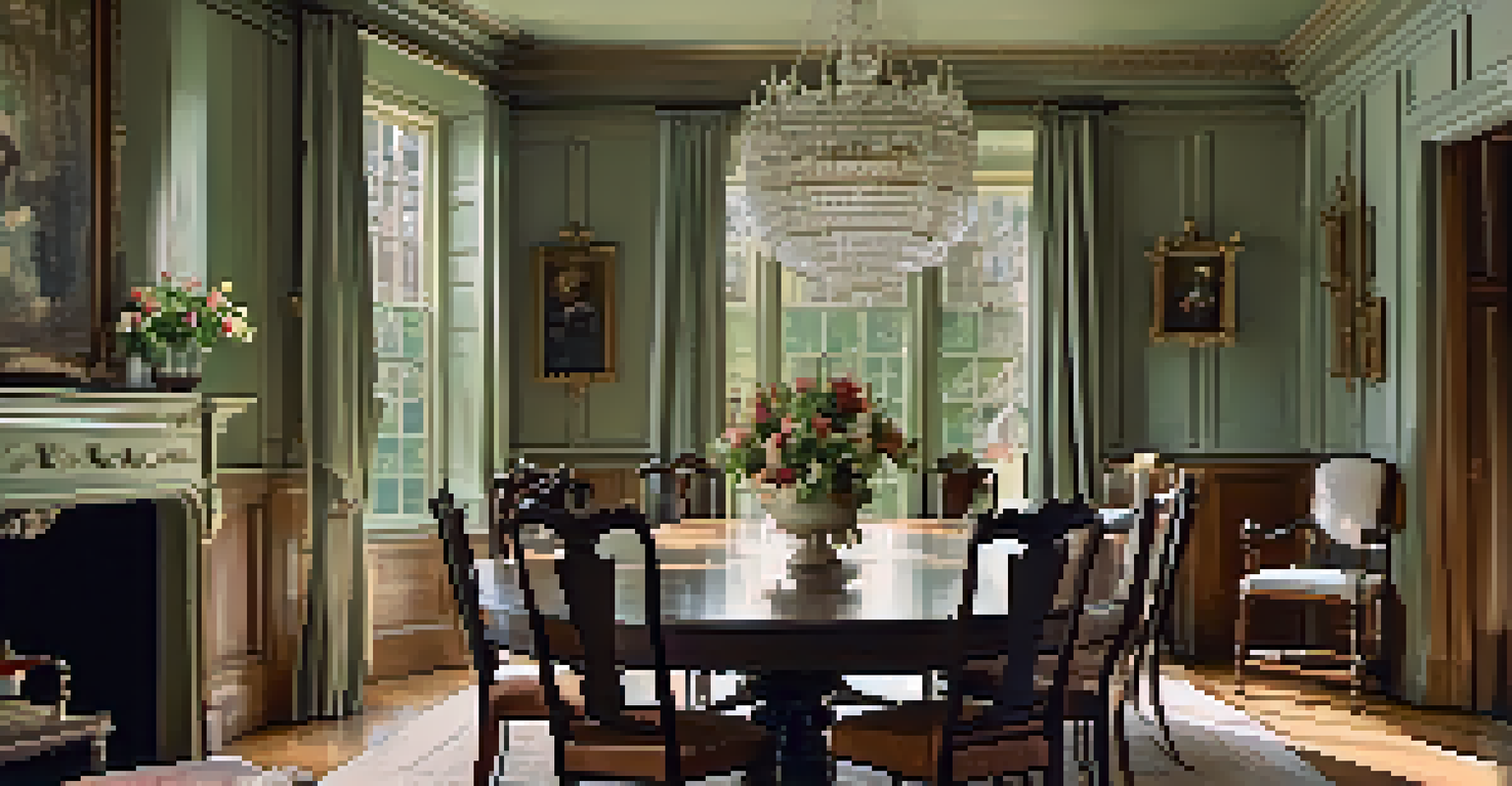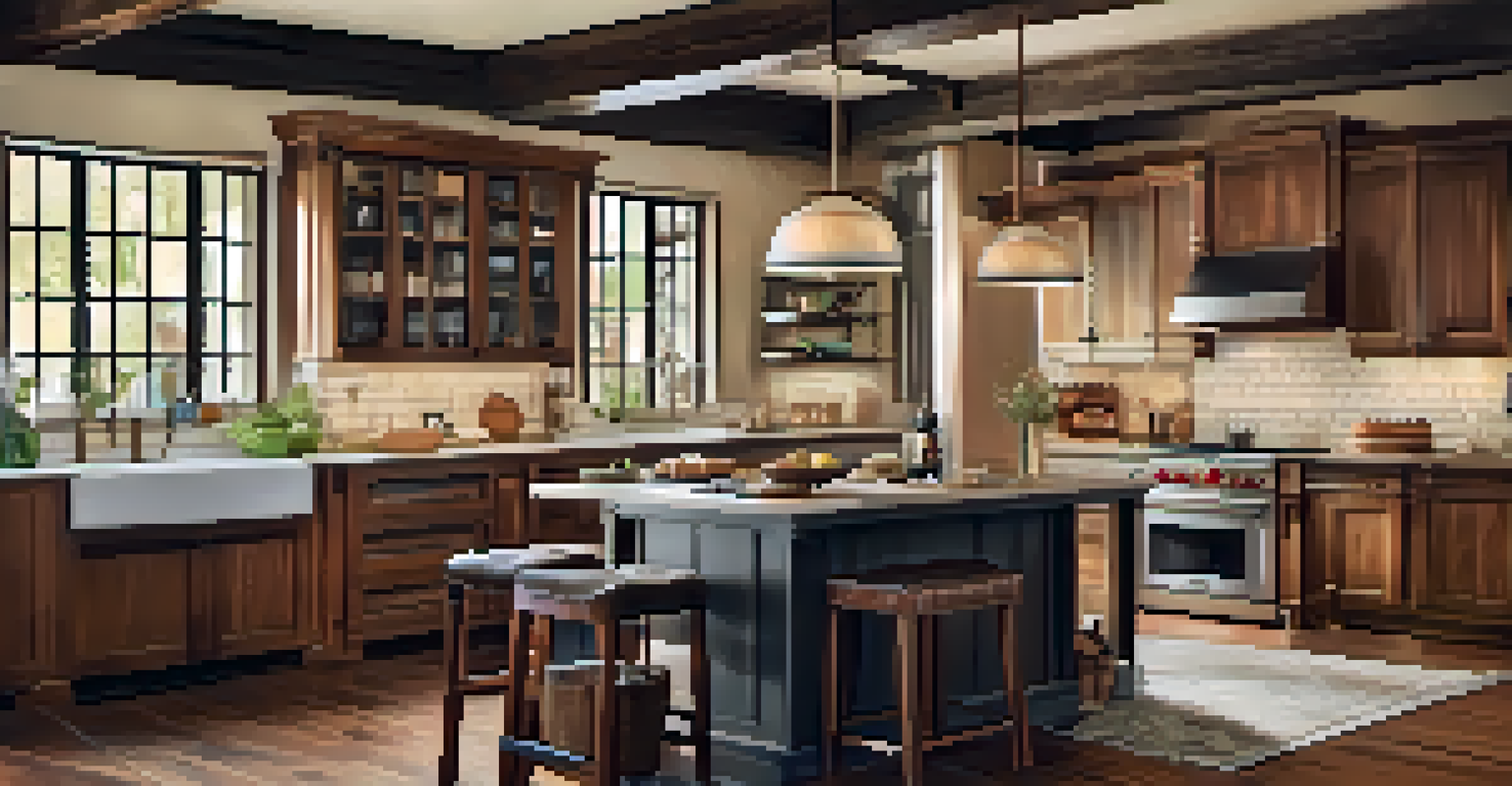Inspiration for Renovating Historic Homes: A Guide

Understanding the Charm of Historic Homes
Historic homes carry a unique charm that often reflects the era they were built in. From intricate woodwork to vintage fixtures, these elements tell a story that modern homes simply can’t replicate. Embracing this charm is the first step in a successful renovation, allowing homeowners to appreciate the architectural beauty while making necessary updates.
Historic preservation is an important part of our culture, and it gives us a sense of place and belonging.
When you walk into a historic home, you can almost feel the whispers of the past. It's essential to recognize the value of these features, as they can serve as the foundation for your renovation plans. By highlighting the home's original character, you create a living space that is both functional and rich in history.
Moreover, incorporating historical elements into your design choices can enhance the overall aesthetic. Whether it’s restoring original hardwood floors or preserving a vintage fireplace, these details can make a world of difference in maintaining the home's integrity.
Researching the History of Your Home
Before diving into renovations, take the time to research your home's history. Understanding its background can reveal unique architectural features and styles that deserve to be preserved or restored. Local archives, historical societies, and online resources can provide a wealth of information.

Exploring the history of your home isn’t just an academic exercise; it can inspire design choices that align with its original character. For example, if your home is a Victorian, you might consider using period-appropriate colors and materials. This approach not only honors the past but can also increase the home’s value.
Embrace Historic Home Charm
Renovating historic homes involves appreciating their unique architectural features while updating for modern living.
Additionally, knowing your home's historical significance may guide your renovation process. Some homes are part of historic districts, which might require adherence to specific guidelines. Being informed helps you avoid potential pitfalls and ensures your renovations are respectful of the home’s legacy.
Incorporating Modern Amenities with Historic Flair
One of the biggest challenges in renovating historic homes is blending modern amenities with traditional aesthetics. Homeowners often desire updated kitchens and bathrooms while maintaining the home’s historical charm. The key is to find a balance that respects the original design while providing modern functionality.
The best way to preserve the past is to live in it.
For instance, consider installing contemporary appliances that are hidden behind cabinet facades mirroring the old-world style. This way, you can enjoy the conveniences of modern living without sacrificing the home’s character. Additionally, smart home technology can be seamlessly integrated into historic homes with careful planning.
Remember, modern doesn’t mean sterile. You can incorporate contemporary design elements that complement the historical features, such as sleek lighting fixtures or minimalist hardware. These thoughtful choices can enhance the beauty of both old and new, creating a harmonious living space.
Choosing the Right Colors and Materials
When it comes to renovating historic homes, color and material choices play a crucial role. Opting for a color palette that reflects the era of the home can evoke its history while also providing a fresh look. Researching period-appropriate colors can help you choose shades that resonate with the home’s original design.
Additionally, selecting the right materials is essential. For instance, if your home features original woodwork, consider using similar woods for new additions to maintain a cohesive look. Mixing modern materials with traditional ones can also create an interesting contrast while respecting the home’s character.
Preserve Original Features
Keeping elements like crown molding and fireplaces intact not only maintains the home's character but can also enhance its value.
Finally, don't shy away from bold choices! Using a striking accent color or unique material can create focal points that enhance the beauty of your historic home. Just remember to stay true to the overall style to keep the renovation feeling authentic and harmonious.
Preserving Original Features During Renovation
One of the most rewarding aspects of renovating a historic home is preserving its original features. Elements like crown molding, staircases, and fireplaces often define the home's character and should be retained if possible. Carefully planning your renovation can help ensure these features remain intact.
It’s important to assess which features are worth preserving and which may need updating. Sometimes, original elements can be restored rather than replaced, saving both money and the home’s integrity. Consulting with preservation specialists or contractors experienced in historic renovations can provide valuable insights.
Moreover, preserving original features can also enhance the home’s value. Buyers often appreciate homes that retain their historical charm, making your renovation not just a personal project but a smart investment for the future.
Sourcing Sustainable Materials for Renovations
In today’s world, sustainability is more important than ever, and this extends to renovating historic homes. Sourcing sustainable materials not only benefits the environment but can also enhance the home’s historical appeal. Consider using reclaimed wood or vintage fixtures, which add character while being eco-friendly.
Many companies specialize in providing sustainable building materials that maintain the aesthetic of historic homes. From energy-efficient windows to low-VOC paints, these products can help you modernize the home while staying true to its heritage. Such choices can also lead to savings on energy bills in the long run.
Sustainable Renovation Practices
Incorporating sustainable materials and practices during renovations honors the home's history while benefiting the environment.
Additionally, incorporating sustainable practices in your renovation, such as proper insulation and energy-efficient systems, can create a more comfortable living space. This approach honors both the past and the future, ensuring that your historic home remains a cherished part of the community.
Working with Professionals Who Understand Historic Homes
When renovating a historic home, enlisting the help of professionals who understand the nuances of these properties can make all the difference. Architects, contractors, and designers experienced in historic renovations can provide insights and guidance that ensure your project stays true to the home’s character. Their expertise can help you avoid common pitfalls and make informed decisions.
Additionally, working with local preservation organizations can connect you with skilled craftsmen who specialize in restoring historic features. This collaboration can lead to a more authentic renovation that honors the home’s legacy. As they say, it takes a village, and in this case, a team of knowledgeable professionals can help bring your vision to life.

Remember, investing in experienced professionals is an investment in the future of your home. Their understanding of building codes, preservation techniques, and design principles can help you create a beautiful, functional living space that celebrates the home's history.